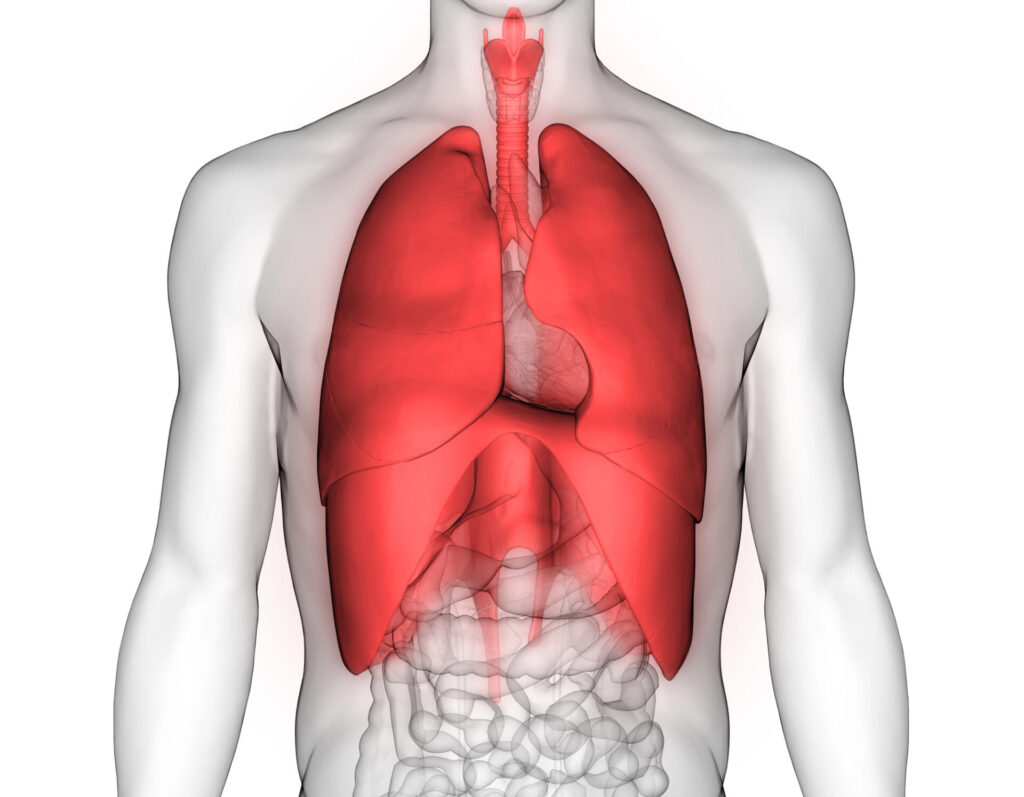Ideally, a well-balanced, nutrient-dense diet, including a variety of fruits and vegetables, whole grains, legumes, and healthy fats can meet all of one’s daily requirements for vitamins and minerals, as well as essential fatty acids and other nutrients.
In practice, however, it is difficult for many individuals to obtain a sufficient variety and/or quantity of wholesome foods to fulfill their nutritional needs on a regular basis. There is often a gap between what we consume versus what we require.[1]
In addition to compromising overall health, inadequacies in key nutrients can impair immune function. A recent article (which we’ll refer to as “the 2020 study”), published in the peer-reviewed journal Nutrients, highlights the magnitude of the problem.[2] The authors carried out an analysis of usual micronutrient intakes based on data from the National Health and Nutrition Examination Surveys (NHANES), a nationwide survey conducted by Centers for Disease Prevention and Control (CDC).
Using data obtained between 2005 and 2016, the authors compared the usual dietary intakes from food and supplements to the estimated average requirement (EAR) for a particular nutrient, with a focus on nutrients of importance for immune function. The results revealed substantial inadequacies in vitamins A, C, D, and E, as well as zinc, across the population, especially among individuals who relied on food alone to meet their nutrient needs. Insufficient intakes of these nutrients may increase the risk of infection, which we will look at further here.
Vitamin D
Vitamin D deficiency is a major public health problem worldwide in all age groups. The 2020 study showed that 95% percent of non-supplemented adults had vitamin D intakes below the EAR.[2]
The high prevalence of vitamin D deficiency among individuals of all ages is of great concern from a public health perspective.[2],[3] Vitamin D is mainly thought of in terms of bone health, but this fat-soluble vitamin has emerged as a central regulator of the body’s defense against infections.[4],[5],[6] Among its many immune-supportive functions, vitamin D induces the expression of peptides known as defensins and cathelicidins,[7],[8] which are capable of inhibiting many different viruses and bacteria.[9],[10],[11],[12]
In addition to dietary sources, vitamin D is generated within the skin upon exposure to ultraviolet B rays from the sun.[13],[14] Vitamin D status tends to be at its lowest in winter,[15],[16] coinciding with the seasonal prevalence of respiratory infections. Insufficient production and /or intake of vitamin D can have a significant impact on immune health. During the 1918–1919 “Spanish flu” pandemic, for example, greater fatality rates occurred in those with less sunlight exposure.[17]
Low levels of vitamin D are associated with an increased risk of upper respiratory tract infections, as well as otitis media, urinary tract infections, infectious hepatitis, and other infectious diseases.[5],[18],[19] Research suggests that vitamin D supplementation may cut the risk of acute respiratory tract infections by an average of one-third or more,5,[20] and that individuals with low starting levels of 25(OH)D (<40 nmol/l) are likely to see the most benefit.[21],[22] A recent systematic review further concluded that vitamin D supplementation was safe and that it protected against acute respiratory tract infections overall.[23]
To reach a 25(OH)D blood level of at least 75 nmol/L (30 ng/mL), which is the level advised by many experts, requires 1,000 to 2,000 IU per day of supplemental vitamin D3 (cholecalciferol), or even more, particularly in those with a low level of sun exposure.3,[24],[25],[26],[27] There is good rationale to combine vitamin D with vitamin C and zinc (discussed below), in light of their synergistic effects on respiratory tract infections.[28]
Vitamin C
Vitamin C (ascorbic acid) is a water-soluble antioxidant that is indispensable for a healthy immune response against viral and bacterial infections.[29],[30],[31],[32],[33],[34] This vitamin has a pivotal impact on the innate and adaptive immune response.[30] The 2020 study, however, showed that 46% of non-supplemented adults had vitamin C intakes below the EAR.[2]
Vitamin C is quickly depleted during the common cold, influenza, or pneumonia, meaning that vitamin C requirements go up dramatically when one is ill.[31],[35]Ascorbate levels in white blood cells were shown to decline by 50% when subjects contracted a cold, and only returned to the original levels one week after recovery.[36]
Among its many functions, vitamin C stimulates the production of interferon (IFN) at the initial stage of viral infection, thereby heightening the body’s defenses.[33],[34] Clinical trials have shown that vitamin C supplementation may shorten the duration and severity of common cold symptoms, and also reduce the incidence of colds in individuals with suboptimal vitamin C levels.[37]
In healthy individuals, a daily vitamin C intake of 100 to 200 mg provides an adequate amount of vitamin C to saturate the plasma.[38],[39] However, more vitamin C is consumed by the cells of the body in the course of fighting infections, so doses that are 10 times higher may be needed once an infection has taken hold.[32],[40],[41] Consuming 1 gram per day of vitamin C was shown to shorten the duration of colds in adults by 6% on average, and consuming ≥2 grams per day shortened the duration of colds by 21%.[42] A meta-analysis showed that extra doses of vitamin C could benefit patients who contract the common cold, even if they were already supplementing vitamin C regularly.40
Vitamin A
Adequate vitamin A has long been associated with resistance to infections.[43],[44] This vitamin plays a critical role in the differentiation, maturation, and function of immune cells, both for innate and adaptive immunity,[45],[46],[47],[48] and it can even favorably modulate the gut microbiota.[49]
The 2020 study showed that 45% of non-supplemented adults had vitamin A intakes below the EAR.[2] Vitamin A deficiency has been observed to increase the risk for viral infections in both children and adults.[50],[51],[52] Acute illnesses and infections may further deplete serum retinol concentrations and increase the requirements for this vitamin.[53],[54],[55]
A study conducted in China showed that the serum levels of vitamins A, along with vitamins D and E, were significantly lower in children with active respiratory infections than in the control groups.[50] Also, researchers in Italy found that a high percentage of adults with hepatitis C infection had serum vitamin A deficiency, which was associated with the lack of a response to antiviral therapy.[51]
The importance of vitamin A for the immune system has been studied extensively with respect to measles, one of the most contagious infectious diseases known to humans. In 1932, Dr. Joseph Ellison and colleagues were the first to associate vitamin A status with the severity of pulmonary disease during measles infection.[56] Subsequent studies found that vitamin A supplementation reduced mortality from measles in vitamin A-deficient children.[44],[57] Both the American Academy of Pediatrics and the World Health Organization recommend supplemental vitamin A for the management of measles.[58]
Vitamin E
Vitamin E , the main lipid-soluble antioxidant in the body, prevents oxidative damage to polyunsaturated fatty acids of cellular membranes, and thereby preserves the function of immune cells.[59] The 2020 study showed that 84% percent of non-supplemented adults had vitamin E intakes below the EAR.[2]
Vitamin E deficiency impairs both humoral and cell-mediated immune functions.[60],[61],[62] A deficiency of this vitamin can increase the risk of infections,[63] and exacerbate the damage that occurs once an infection takes hold.[64],[65] Vitamin E supplementation has been shown to improve measures of immune function and to reduce the incidence and severity of respiratory infections in the elderly, whose immune systems may be compromised due to age.[66],[67],[68],[69]
Zinc
Zinc supports innate and acquired immunity through direct, indirect, and antioxidant mechanisms.[70],[71],[72],[73] The 2020 study showed that 15% of non-supplemented adults had zinc intakes below the EAR.2 Additional studies have shown that the prevalence of marginal zinc intakes depends on age, ranging from 12% of younger adults to 30% or more of individuals over the age of 60.[74],[75],[76]
Even mild zinc deficiencies can increase the risk and severity of viral infections, including respiratory infections such as influenza and pneumonia.[77],[78],[79],[80] Zinc deficiency not only compromises immunity, but also shifts the immune system toward an inflammatory state that can predispose the body for damage to the lungs and other organs.[81],[82] Conversely, supplemental zinc may help reduce the risk of infections.[83],[84],[85] A combination of zinc (10 to 30 mg daily) with vitamin C (1 gram daily) has also been suggested to shorten the duration of respiratory tract infections, including the common cold.[86]
Summing up
The immune system needs multiple micronutrients, including vitamins and minerals, which play vital, often synergistic roles at every stage of the immune response. The 2020 study shows that a significant number of Americans typically do not take in the estimated average requirements for vitamins A, C, D, and E, and zinc – each key players in a normal, healthy, balanced immune response.[2] Selenium was not identified as having a high prevalence of inadequacy in the 2020 study, but a separate study of infectious disease patients found that 47% were deficient in selenium.[87] Health care providers should be aware that their patients may need to adjust their diets, and/or consider supplementation, to obtain adequate intakes of immune health nutrients.
Marina MacDonald, MS, PhD completed her graduate work in nutrition at the University of Wisconsin (Madison) and the University of California (Davis). She conducted postdoctoral research in Metabolism and Endocrinology at the Howard Hughes Medical Institute (University of Washington, Seattle). Her experience in the biopharmaceutical industry includes product development, research, and discovery. Dr. MacDonald enjoys doing freelance writing and research in the fields of nutrition and physiology.
References:
[1] Wilson MM, et al. American diet quality: where it is, where it is heading, and what it could be. J Acad Nutr Diet. 2016 Feb;116(2):302-10.
[2] Reider CA, et al. Inadequacy of immune health nutrients: intakes in US adults, the 2005-2016 NHANES. Nutrients. 2020 Jun 10;12(6):E1735.
[3] Holick MF, et al. Evaluation, treatment, and prevention of vitamin D deficiency: an Endocrine Society clinical practice guideline. J Clin Endocrinol Metab. 2011 Jul;96(7):1911-30.
[4] Kroner Jde C, et al. Vitamin D every day to keep the infection away? Nutrients. 2015 May 29;7(6):4170-88.
[5] Zitterman A, et al. Vitamin D and airway infections: a European perspective. Eur J Med Res. 2016 Mar 24;21:14.
[6] Aranow C. Vitamin D and the immune system. J Investig Med. 2011 Aug;59(6):881-6.
[7] Gombart AF, et al. The vitamin D-antimicrobial peptide pathway and its role in protection against infection. Future Microbiol. 2009 Nov;4(9):1151-65.
[8] Wang TT, et al. Cutting edge: 1,25-dihydroxyvitamin D3 is a direct inducer of antimicrobial peptide gene expression. J Immunol. 2004 Sep 1;173(5):2909-12.
[9] Salvatore M, et al. alpha-Defensin inhibits influenza virus replication by cell-mediated mechanism(s). J Infect Dis. 2007 Sep 15;196(6):835-43.
[10] Urashima M, et al. Randomized trial of vitamin D supplementation to prevent seasonal influenza A in schoolchildren. Am J Clin Nutr. 2010 May;91(5):1255-60.
[11] Téllez-Pérez AD, et al. Cholecalciferol (vitamin D) differentially regulates antimicrobial peptide expression in bovine mammary epithelial cells: implications during Staphylococcus aureus internalization. Vet Microbiol. 2012 Nov 9;160(1-2):91-8.
[12] Liu PT, et al. Toll-like receptor triggering of a vitamin D-mediated human antimicrobial response. Science. 2006 Mar 24;311(5768):1770-3.
[13] Wacker M, Holick MF. Sunlight and vitamin D: a global perspective for health. Dermatoendocrinol. 2013 Jan 1;5(1):51-108.
[14] Nair R, Maseeh A. Vitamin D: the “sunshine” vitamin. J Pharmacol Pharmacother. 2012 Apr;3(2):118-26.
[15]Poskitt EM, et al. Diet, sunlight, and 25-hydroxy vitamin D in healthy children and adults.Br Med J. 1979 Jan 27;1(6158):221-3.
[16] Sheltawy M, et al. The contribution of dietary vitamin D and sunlight to the plasma 25-hydroxyvitamin D in the elderly. Hum Nutr Clin Nutr. 1984 May;38(3):191-4.
[17] Grant WB, Giovannucci E. The possible roles of solar ultraviolet-B radiation and vitamin D in reducing case-fatality rates from the 1918-1919 influenza pandemic in the United States. Dermatoendocrinol. 2009 Jul;1(4):215-9.
[18] Deng QF, et al. Vitamin D and urinary tract infection: a systematic review and meta-analysis. Ann Clin Lab Sci. 2019 Jan;49(1):134-42.
[19] Pham H, et al. Acute respiratory tract infection and 25-hydroxyvitamin D concentration: a systematic review and meta-analysis. Int J Environ Res Public Health. 2019 Aug 21;16(17).
[20] Bergman P, et al. Vitamin D and respiratory tract infections: a systematic review and meta-analysis of randomized controlled trials. PLoS One. 2013 Jun 19;8(6):e65835.
[21] Simpson S, et al. Weekly cholecalciferol supplementation results in significant reductions in infection risk among the vitamin D deficient: results from the CIPRIS pilot RCT. BMC Nutrition. 2015 Dec;1(1):7.
[22] Ginde AA, et al. Association between serum 25-hydroxyvitamin D level and upper respiratory tract infection in the Third National Health and Nutrition Examination Survey. Arch Intern Med. 2009 Feb 23;169(4):384-90.
[23] Martineau AR, et al. Vitamin D supplementation to prevent acute respiratory tract infections: systematic review and meta-analysis of individual participant data. BMJ. 2017 Feb 15;356:i6583.
[24] Chao YS, et al. The importance of dose, frequency and duration of vitamin D supplementation for plasma 25-hydroxyvitamin D. Nutrients. 2013 Oct 11;5(10):4067-78.
[25] Lukaszuk JM, Luebbers PE. 25(OH)D status: effect of D3 supplement. Obes Sci Pract. 2017 Mar;3(1):99-105.
[26] Veugelers PJ, Ekwaru JP. A statistical error in the estimation of the recommended dietary allowance for vitamin D. Nutrients. 2014 Oct 20;6(10):4472-5.
[27] Heaney R, et al. Letter to Veugelers, P.J. and Ekwaru, J.P., A statistical error in the estimation of the recommended dietary allowance for vitamin D. Nutrients. 2015 Mar 10;7(3):1688-90.
[28] Maggini S, et al. Vitamins C, D and zinc: synergistic roles in immune function and infections. Vitam Miner. 2017;6(2):167.
[29] Wintergerst ES, et al. Immune-enhancing role of vitamin C and zinc and effect on clinical conditions. Ann Nutr Metab. 2006;50(2):85-94.
[30] Mousavi S, et al. Immunomodulatory and antimicrobial effects of vitamin C. Eur J Microbiol Immunol (Bp). 2019 Aug 16;9(3):73-9.
[31] Hemilä H. Vitamin C and infections. Nutrients. 2017 Mar 29;9(4):339.
[32] Carr AC, Maggini S. Vitamin C and immune function. Nutrients. 2017 Nov 3;9(11):1211.
[33] KimY, et al. Vitamin C is an essential factor on the anti-viral immune responses through the production of interferon-α/β at the initial stage of influenza A virus (H3N2) infection. Immune Netw. 2013 Apr;13(2):70-4.
[34] Furuya A, et al. Antiviral effects of ascorbic and dehydroascorbic acids in vitro. Int J Mol Med. 2008 Oct;22(4):541-5.
[35] Hunt C, et al. The clinical effects of vitamin C supplementation in elderly hospitalised patients with acute respiratory infections. Int J Vitam Nutr Res. 1994;64(3):212-9.
[36] Hume R, Weyers E. Changes in leucocyte ascorbic acid during the common cold. Scott Med J. 1973 Jan;18(1):3-7.
[37] Johnston CS, et al. Vitamin C supplementation slightly improves physical activity levels and reduces cold incidence in men with marginal vitamin C status: a randomized controlled trial. Nutrients. 2014 Jul 9;6(7):2572-83.
[38] Levine M, et al. Vitamin C pharmacokinetics in healthy volunteers: evidence for a recommended dietary allowance. Proc Natl Acad Sci U S A. 1996 Apr 16;93(8):3704-9.
[39] Levine M, et al. A new recommended dietary allowance of vitamin C for healthy young women. Proc Natl Acad Sci U S A. 2001 Aug 14;98(17):9842-6.
[40] Ran L, et al. Extra dose of vitamin C based on a daily supplementation shortens the common cold: a meta-analysis of 9 randomized controlled trials. Biomed Res Int. 2018 Jul 5;2018:1837634.
[41] Pitt HA, Costrini AM. Vitamin C prophylaxis in marine recruits. JAMA. 1979 Mar 2;241(9):908-11.
[42] Hemilä H. Vitamin C supplementation and common cold symptoms: factors affecting the magnitude of the benefit. Med Hypotheses. 1999 Feb;52(2):171-8.
[43] Wiseman EM, et al. The vicious cycle of vitamin A deficiency: a review. Crit Rev Food Sci Nutr. 2017 Nov 22;57(17):3703-14.
[44] Imdad A, et al. Vitamin A supplementation for preventing morbidity and mortality in children from six months to five years of age. Cochrane Database Syst Rev. 2017 Mar 11;3(3):CD008524.
[45] Kim MH, et al. Retinoic acid differentially regulates the migration of innate lymphoid cell subsets to the gut. Immunity. 2015;43:107–19.
[46] Huang Z, et al. Role of vitamin A in the immune system. J Clin Med. 2018;7:258.
[47] Gombart AF, et al. A review of micronutrients and the immune system – working in harmony to reduce the risk of infection. Nutrients. 2020;12:236.
[48] El-Zayat SR, et al. Effect of vitamin A deficiency on thymosin-β4 and CD4 concentrations. J Genet Eng Biotechnol. 2018 Jun 1;16(1):57-61.
[49] Lee H, Ko G. New perspectives regarding the antiviral effect of vitamin A on norovirus using modulation of gut microbiota. Gut Microbes. 2017 Nov 2;8(6):616-20.
[50] Zhang J, et al. Correlation of serum vitamin A, D, and E with recurrent respiratory infection in children. Eur Rev Med Pharmacol Sci. 2019 Sep;23(18):8133-8.
[51] Bitetto D, et al. Vitamin A deficiency is associated with hepatitis C virus chronic infection and with unresponsiveness to interferon‐based antiviral therapy. Hepatology. 2013 Mar;57(3):925-33.
[52] Stinchfield PA, Orenstein WA. Vitamin A for the management of measles in the United States. Infect Dis Clin Pract. 2020 Jul 1;28(4):181-7.
[53] Iyer N, Vaishnava S. Vitamin A at the interface of host–commensal–pathogen interactions. PLoS Pathogens. 2019 Jun 6;15(6):e1007750.
[54] Rosales FJ, et al. Effects of acute inflammation on plasma retinol, retinol-binding protein, and its mRNA in the liver and kidneys of vitamin A-sufficient rats. J Lipid Res. 1996;37(5):962–71.
[55] Neuzil KM, et al. Serum vitamin A levels in respiratory syncytial virus infection. J Pediatr. 1994 Mar;124(3):433-6.
[56] Ellison JB. Intensive vitamin therapy in measles. Br Med J. 1932 Oct 15;2(3745):708-11.
[57] Butler JC, et al. Measles severity and serum retinol (vitamin A) concentration among children in the United States. Pediatrics. 1993 Jun;91(6):1176-81.
[58] National Foundation for Infection Diseases (NFID). Call to Action: Vitamin A for the Management of Measles in the United States [Internet]. Bethesda (MD): NFID; 2020 [cited 13 August 2020]. Available from: https://www.nfid.org/wp-content/uploads/2020/06/Call-to-Action-Vitamin-A-for-the-Management-of-Measles-in-the-US-FINAL.pdf
[59] Lewis ED, et al. Regulatory role of vitamin E in the immune system and inflammation. IUBMB Life. 2019 Apr;71(4):487-94.
[60] Han SN, Meydani SN. Impact of vitamin E on immune function and its clinical implications. Expert Rev Clin Immunol. 2006 Jul;2(4):561-7.
[61] Wu D, et al. Nutritional modulation of immune function: analysis of evidence, mechanisms, and clinical relevance. Front Immunol. 2018;9:3160.
[62] Lee GY, et al. The role of vitamin E in immunity. Nutrients 2018;10:1614.
[63] Aibana O, et al. Vitamin E status is inversely associated with risk of incident tuberculosis disease among household contacts. J Nutr. 2018 Jan 1;148(1):56-62.
[64] Beck MA, et al. Vitamin E deficiency intensifies the myocardial injury of coxsackievirus B3 infection of mice. J Nutr. 1994 Mar;124(3):345-58.
[65] Mileva M, Galabov AS. Vitamin E and influenza virus infection. Vit E Health Dis. 2018 Oct 24;67.
[66] De la Fuente M, et al. Vitamin E ingestion improves several immune functions in elderly men and women.
Free Radic Res. 2008 Mar;42(3):272-80.
[67] Meydani SN, et al. Vitamin E supplementation enhances cell-mediated immunity in healthy elderly subjects. Am J Clin Nutr. 1990 Sep 1;52(3):557-63.
[68] Meydani SN, et al. Vitamin E and respiratory tract infections in elderly nursing home residents: a randomized controlled trial.
[69] Neupane B, et al. Predictors of in-hospital mortality and re-hospitalization in older adults with community-acquired pneumonia: A prospective cohort study. BMC Geriatr. 2010;10:22.
[70] Wessels I, et al. Zinc as a gatekeeper of immune function. Nutrients. 2017 Nov 25;9(12):1286.
[71] Sapkota M, Knoell DL. Essential role of zinc and zinc transporters in myeloid cell function and host defense against infection. J Immunol Res. 2018 Oct 17;2018:4315140.
[72] Prasad AS, Bao B. Molecular mechanisms of zinc as a pro-antioxidant mediator: clinical therapeutic implications. Antioxidants (Basel). 2019 Jun 6;8(6):164.
[73] Gao H, et al. The role of zinc and zinc homeostasis in macrophage function. J Immunol Res. 2018 Dec 6;2018:6872621.
[74] Blumberg JB, et al. Contribution of dietary supplements to nutritional adequacy in various adult age groups. Nutrients. 2017 Dec 6;9(12):1325.
[75] Ervin RB, Kennedy-Stephenson J. Mineral intakes of elderly adult supplement and non-supplement users in the Third National Health and Nutrition Examination Survey. J Nutr. 2002 Nov;132(11):3422-7.
[76] Vural Z, et al. Trace mineral intake and deficiencies in older adults living in the community and institutions: a systematic review. Nutrients. 2020 Apr 13;12(4):1072.
[77] Mocchegiani E, Muzzioli M. Therapeutic application of zinc in human immunodeficiency virus against opportunistic infections. J Nutr. 2000 May;130(5S Suppl):1424S-31S.
[78] Read SA, et al. The role of zinc in antiviral immunity. Adv Nutr. 2019 Jul 1;10(4):696-710.
[79] Eijelkamp BA, et al. Dietary zinc and the control of Streptococcus pneumoniae infection. PLoS Pathog. 2019 Aug 22;15(8):e1007957.
[80] McCarty MF, DiNicolantonio JJ. Nutraceuticals have potential for boosting the type 1 interferon response to RNA viruses including influenza and coronavirus. Prog Cardiovasc Dis. 2020 Feb 12 [online ahead of print.]
[81] Kido T, et al. Inflammatory response under zinc deficiency is exacerbated by dysfunction of the T Helper type 2 lymphocyte-M2 macrophage pathway. Immunology. 2019 Apr;156(4):356-72.
[82] Gammoh NZ, Rink L. Zinc in infection and inflammation. Nutrients. 2017 Jun 17;9(6):624.
[83] Barnett JB, et al. Low zinc status: a new risk factor for pneumonia in the elderly? Nutr Rev. 2010 Jan;68(1):30-7.
[84] Yasuda H, Tsutsui T. Infants and elderlies are susceptible to zinc deficiency. Sci Rep. 2016 Feb 25;6:21850.
[85] Meydani SN, et al. Serum zinc and pneumonia in nursing home elderly. Am J Clin Nutr. 2007 Oct;86(4):1167-73.
[86] Maggini S, et al. A combination of high-dose vitamin C plus zinc for the common cold. J Int Med Res. 2012;40(1):28-42.
[87] Dizdar OS, et al. Nutritional risk, micronutrient status and clinical outcomes: a prospective observational study in an infectious disease clinic. Nutrients. 2016 Feb 29;8(3):124.





